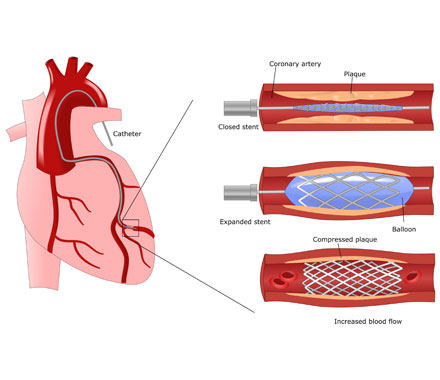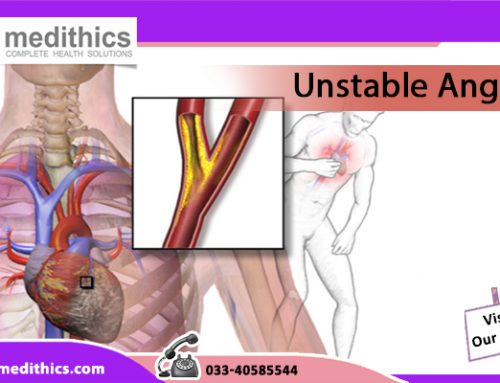This procedure is used for the treatment of coronary artery disease, in which the coronary arteries harden making it difficult for blood and oxygen to flow freely. This process involves catheterization to open up the artery making the flow easy.The surgery can take up to 1 to 3 hours with an overnight stay at the hospital.
Overview
Angioplasty is performed by inserting a catheter into a blocked artery. There are two types of angioplasty, one is the balloon method, and the other is the stent method. Both the procedures help open the blocked artery making the flow of blood and oxygen consistent and easy.
Before the treatment
After using partial anesthesia,a very think plastic tube is inserted into an artery of yours through your arm or groin. The catheter carries a small amount of contrast liquid that is put into your blood vessels. As the catheter moves, it photographs parts of your heart’s chambers, valves and vessels through X’ray. This helps the heart specialist ascertain the condition of your heart and arteries, and if angioplasty is needed.
If the cardiologist finds it necessary to perform angioplasty, they will insert the catheter into the blocked artery.
How is it performed
Balloon method: In the balloon method, the catheter inserted holds a small balloon on its tip which is inflated once it enters the blocked artery. The balloon stretches open the surface to help blood flow.
Stent method: Stents are tiny, expandable tubes put into your artery using a balloon catheter. A stent acts like a scaffold holding your coronary artery open.
Recovery
After the surgery, you might be required to stay lying on the bed for 6 hours. After 2 hours you might be allowed to raise your head two pillow’high.
If the catheter was inserted through your groin, you might not be allowed to eat anything until the tube is removed. After the removal, you will be asked to continue a healthy diet prescribed by your doctor.
If the catheter was inserted through your waist or arm, your doctor will put a bandage around the area till it heals.







Leave A Comment
You must be logged in to post a comment.